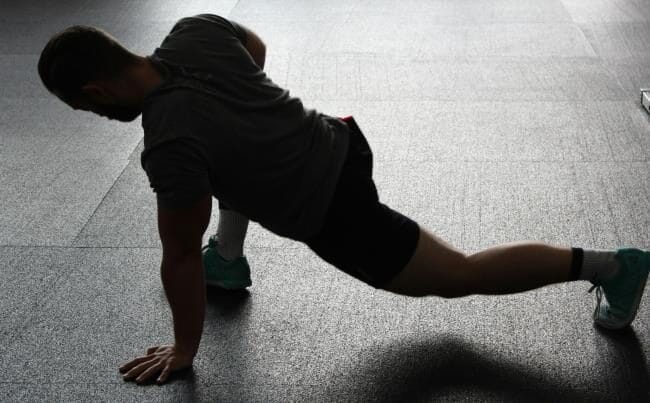Getting fit requires a gradual on-ramp. You can’t expect to start pounding the pavement the day after a new year’s resolution and expect to be successful. Real conditioning takes time – time to build stamina, strength, and the ability to recover quickly. The correct approach to conditioning to improve fitness is gradual, steady, and built on continual feedback around how you feel in order to sustain progress.
Here are 10 little-known facts about how conditioning improves fitness and why it matters for long-term strength and health. We also provide the right approach to conditioning to train smarter.

1. Conditioning Boosts Strength Gains
Strength doesn’t come only from lifting heavy. When conditioning improves, your body can handle more weight and bounces back faster without long recovery afterwards. No one starts by benching 250 lbs or squatting 400 lbs.
2. Improved Conditioning Increases Capacity and Stamina
Work capacity is the body’s ability to keep at it without breaking down. With greater conditioning, you handle more sets, reps, and activity without falling apart.
3. Conditioning Improves Recovery
Muscles don’t grow during training—they grow during recovery. Conditioning improves circulation, which speeds nutrient delivery and reduces soreness between workouts.
4. Well-Conditioned Bodies Burn Fat Faster
Conditioning builds more mitochondria, the “engines” of your muscles. More engines mean better fat burning, steadier energy, and less strain on your system during exercise.
5. Conditioning Allows for Explosive Power
Power fades with tiredness. With stronger conditioning, you maintain speed, force, and sharp movements longer, whether playing sports or working out at the gym.
6. High-Intensity Conditioning Improves Metabolism
Interval-style conditioning does more than burn calories while exercising. It increases metabolism for up to 24 hours, keeping your body in fat-burning mode long after the workout [1].
7. Conditioning Improves Joint Stability
Conditioning strengthens not just muscle but also tendons and ligaments. Stronger support protects joints, decreases risk of injury, and keeps movement smooth.
8. Better Conditioning Manages Fatigue More Efficiently
That burning feeling in your muscles during intense exercise comes from acidity (accumulation of hydrogen ions) as your body makes energy quickly. With better conditioning, your body clears these byproducts away more efficiently, delaying discomfort and helping you train longer [2].
9. Conditioning Balances Hormones
Conditioning reduces stress hormones while increasing muscle building hormones. The result is better recovery, more consistent energy, and improved quality of sleep [3].
10. Conditioning Extends Training Longevity
The biggest gains come from being consistent over years. Better conditioning decreases injuries, speeds up recovery, and makes it easier to train hard without issue.

The Right Approach to Conditioning
A good conditioning approach involves training smarter not harder. It involves maximizing gain and minimizing pain. As you get older you need to establish a stronger base, greater stamina and do whatever is necessary to ensure you recover quickly and fully from your workout. That means balancing effort with taking care of your self, so conditioning builds you up instead of breaking you down.
Here’s what works well:
- Try consistency over intensity – Short, regular sessions make bigger long-term improvements than random all-out effort sessions.
- Balance strength and cardio – Conditioning improves most when you combine resistance training with aerobic exercise. This supports both muscle and heart improvements.
- Consider activities for recovery – Light activities such as walking and cycling, improve circulation and speed recovery without draining you of energy.
- Train breathing efficiency – Nasal breathing and controlled breath holds improve CO₂ tolerance, which increases oxygen delivery and improves endurance.
- Protect your joints – Low-impact exercises like swimming, rowing, or using resistance bands, builds stamina without wearing your body down.
- Listen to your body – Face it – we are getting older so being in tune with regular aches, pains and tiredness versus feeling unusually run down will allow you to keep training, slow down, or stop depending on your awareness of your body. This supports a more long term sustainable approach to conditioning to improve fitness.
Proper conditioning as you get older is about doing enough to challenge you while leaving room for recovery. When you approach fitness this way, every workout builds a stronger base for sustained fitness.
Final Takeaway for Conditioning to Improve Fitness
Conditioning is more than doing extra things to become fit. It is an approach to keep you strong, steady, and accident free. With better conditioning, you don’t just complete your workouts, you benefit much more from them. Over time, this approach keeps you fit, capable, and ready for whatever life sends your way.
Check out Why is it important to warm up before exercise?.
…
The Content is not intended to be a substitute for professional medical advice, diagnosis, or treatment. Always seek the support and guidance of your physician when you are unsure about any health issues.







